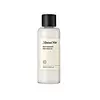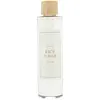What's inside
What's inside
 Key Ingredients
Key Ingredients

 Benefits
Benefits

 Concerns
Concerns

No concerns
 Ingredients Side-by-side
Ingredients Side-by-side

Water
Skin ConditioningGlycerin
HumectantButylene Glycol
HumectantPentylene Glycol
Skin ConditioningOryza Sativa Bran Water
MaskingNiacinamide
SmoothingLimnanthes Alba Seed Oil
Skin ConditioningButyrospermum Parkii Butter
Skin ConditioningAspergillus/Rice Ferment Extract
HumectantChlorella Vulgaris Extract
Skin ConditioningGalactomyces Ferment Filtrate
HumectantOryza Sativa Extract
AbsorbentMelia Azadirachta Flower Extract
Skin ConditioningOcimum Sanctum Leaf Extract
Skin ConditioningTheobroma Cacao Seed Extract
AntioxidantMelia Azadirachta Leaf Extract
Skin ConditioningCurcuma Longa Root Extract
MaskingCorallina Officinalis Extract
Skin ConditioningAspergillus/Rice Ferment Filtrate
Skin ConditioningLactobacillus/Rice Ferment Filtrate
Skin ConditioningSaccharomyces/Rice Ferment Filtrate Extract
AntioxidantOryza Sativa Bran Oil
EmollientGlucose
HumectantHydrogenated Lecithin
EmulsifyingFructooligosaccharides
HumectantFructose
HumectantPanthenol
Skin Conditioning1,2-Hexanediol
Skin ConditioningPolyglyceryl-10 Stearate
Skin ConditioningCaprylic/Capric Triglyceride
MaskingEthylhexylglycerin
Skin ConditioningPolyglyceryl-10 Oleate
Skin ConditioningPolyglyceryl-3 Methylglucose Distearate
EmulsifyingC12-14 Pareth-12
EmulsifyingAcrylates/C10-30 Alkyl Acrylate Crosspolymer
Emulsion StabilisingTromethamine
BufferingCeramide NP
Skin ConditioningDextrin
AbsorbentTocopherol
AntioxidantStearic Acid
CleansingCeramide Ns
Skin ConditioningCholesterol
EmollientPhytosphingosine
Skin ConditioningCeramide AP
Skin ConditioningCeramide As
Skin ConditioningCeramide EOP
Skin ConditioningXanthan Gum
EmulsifyingCetearyl Alcohol
EmollientWater, Glycerin, Butylene Glycol, Pentylene Glycol, Oryza Sativa Bran Water, Niacinamide, Limnanthes Alba Seed Oil, Butyrospermum Parkii Butter, Aspergillus/Rice Ferment Extract, Chlorella Vulgaris Extract, Galactomyces Ferment Filtrate, Oryza Sativa Extract, Melia Azadirachta Flower Extract, Ocimum Sanctum Leaf Extract, Theobroma Cacao Seed Extract, Melia Azadirachta Leaf Extract, Curcuma Longa Root Extract, Corallina Officinalis Extract, Aspergillus/Rice Ferment Filtrate, Lactobacillus/Rice Ferment Filtrate, Saccharomyces/Rice Ferment Filtrate Extract, Oryza Sativa Bran Oil, Glucose, Hydrogenated Lecithin, Fructooligosaccharides, Fructose, Panthenol, 1,2-Hexanediol, Polyglyceryl-10 Stearate, Caprylic/Capric Triglyceride, Ethylhexylglycerin, Polyglyceryl-10 Oleate, Polyglyceryl-3 Methylglucose Distearate, C12-14 Pareth-12, Acrylates/C10-30 Alkyl Acrylate Crosspolymer, Tromethamine, Ceramide NP, Dextrin, Tocopherol, Stearic Acid, Ceramide Ns, Cholesterol, Phytosphingosine, Ceramide AP, Ceramide As, Ceramide EOP, Xanthan Gum, Cetearyl Alcohol
Water
Skin ConditioningMethylpropanediol
SolventTriethylhexanoin
MaskingHydrogenated Poly(C6-14 Olefin)
Emollient1,2-Hexanediol
Skin ConditioningNiacinamide
SmoothingPentylene Glycol
Skin ConditioningOryza Sativa Extract
AbsorbentPortulaca Oleracea Extract
Skin ConditioningUlmus Davidiana Root Extract
Skin ConditioningOryza Sativa Bran Extract
Skin ConditioningAmaranthus Caudatus Seed Extract
Skin ConditioningHydrogenated Lecithin
EmulsifyingGlycerin
HumectantPolyglyceryl-10 Myristate
Skin ConditioningButylene Glycol
HumectantEthylhexylglycerin
Skin ConditioningAdenosine
Skin ConditioningCellulose Gum
Emulsion StabilisingCaprylyl Glycol
EmollientTocopherol
AntioxidantWater, Methylpropanediol, Triethylhexanoin, Hydrogenated Poly(C6-14 Olefin), 1,2-Hexanediol, Niacinamide, Pentylene Glycol, Oryza Sativa Extract, Portulaca Oleracea Extract, Ulmus Davidiana Root Extract, Oryza Sativa Bran Extract, Amaranthus Caudatus Seed Extract, Hydrogenated Lecithin, Glycerin, Polyglyceryl-10 Myristate, Butylene Glycol, Ethylhexylglycerin, Adenosine, Cellulose Gum, Caprylyl Glycol, Tocopherol
 Reviews
Reviews

Ingredients Explained
These ingredients are found in both products.
Ingredients higher up in an ingredient list are typically present in a larger amount.
1,2-Hexanediol is a synthetic liquid and another multi-functional powerhouse.
It is a:
- Humectant, drawing moisture into the skin
- Emollient, helping to soften skin
- Solvent, dispersing and stabilizing formulas
- Preservative booster, enhancing the antimicrobial activity of other preservatives
Butylene Glycol (or BG) is used within cosmetic products for a few different reasons:
Overall, Butylene Glycol is a safe and well-rounded ingredient that works well with other ingredients.
Though this ingredient works well with most skin types, some people with sensitive skin may experience a reaction such as allergic rashes, closed comedones, or itchiness.
Learn more about Butylene GlycolEthylhexylglycerin (we can't pronounce this either) is commonly used as a preservative and skin softener. It is derived from glyceryl.
You might see Ethylhexylglycerin often paired with other preservatives such as phenoxyethanol. Ethylhexylglycerin has been found to increase the effectiveness of these other preservatives.
Glycerin is already naturally found in your skin. It helps moisturize and protect your skin.
A study from 2016 found glycerin to be more effective as a humectant than AHAs and hyaluronic acid.
As a humectant, it helps the skin stay hydrated by pulling moisture to your skin. The low molecular weight of glycerin allows it to pull moisture into the deeper layers of your skin.
Hydrated skin improves your skin barrier; Your skin barrier helps protect against irritants and bacteria.
Glycerin has also been found to have antimicrobial and antiviral properties. Due to these properties, glycerin is often used in wound and burn treatments.
In cosmetics, glycerin is usually derived from plants such as soybean or palm. However, it can also be sourced from animals, such as tallow or animal fat.
This ingredient is organic, colorless, odorless, and non-toxic.
Glycerin is the name for this ingredient in American English. British English uses Glycerol/Glycerine.
Learn more about GlycerinHydrogenated Lecithin is created from the hydrogenation of lecithin (a group of phospholipids). Hydrogenation is a chemical reaction between hydrogen and another element.
This ingredient is an emollient and emulsifier. As an emollient, it helps soften skin by trapping moisture within. As an emulsifier, it prevents oil and water ingredients from separating.
Niacinamide is a multitasking form of vitamin B3 that strengthens the skin barrier, reduces pores and dark spots, regulates oil, and improves signs of aging.
And the best part? It's gentle and well-tolerated by most skin types, including sensitive and reactive skin.
You might have heard of "niacin flush", or the reddening of skin that causes itchiness. Niacinamide has not been found to cause this.
In very rare cases, some individuals may not be able to tolerate niacinamide at all or experience an allergic reaction to it.
If you are experiencing flaking, irritation, and dryness with this ingredient, be sure to double check all your products as this ingredient can be found in all categories of skincare.
When incorporating niacinamide into your routine, look out for concentration amounts. Typically, 5% niacinamide provides benefits such as fading dark spots. However, if you have sensitive skin, it is better to begin with a smaller concentration.
When you apply niacinamide to your skin, your body converts it into nicotinamide adenine dinucleotide (NAD). NAD is an essential coenzyme that is already found in your cells as "fuel" and powers countless biological processes.
In your skin, NAD helps repair cell damage, produce new healthy cells, support collagen production, strengthen the skin barrier, and fight environmental stressors (like UV and pollution).
Our natural NAD levels start to decline with age, leading to slower skin repair, visible aging, and a weaker skin barrier. By providing your skin niacinamide, you're recharging your skin's NAD levels. This leads to stronger, healthier, and younger looking skin.
Another name for vitamin B3 is nicotinamide. This vitamin is water-soluble and our bodies don't store it. We obtain Vitamin B3 from either food or skincare. Meat, fish, wheat, yeast, and leafy greens contain vitamin B3.
The type of niacinamide used in skincare is synthetically created.
Learn more about NiacinamideOryza Sativa Extract comes from the rice grain, Oryza sativa. Rice extract has wound healing, antioxidant, anti-inflammatory, and hydrating properties.
Rice grains contain numerous antioxidants which may help with anti-aging, such as vitamin E. Antioxidants help stabilize free-radical molecules. Unstable free-radical molecules may damage your skin cells and accelerate signs of aging.
A study from 2002 found rice to help increase the rate of wound healing. The same study found an improvement of skin barrier function in the patients after taking rice baths.
Numerous in-vitro studies have found rice water to help decrease sun damage by increasing collagen production and inhibiting the process of tyrosinase.
Long story short- tyrosinase is an enzyme that controls melanin production. Our bodies start producing melanin (AKA tanning) when exposed to UV radiation to protect against damage. Rice water is found to partially block this process.
Though more research is needed on rice's ability to help with UV protection, recent studies seem promising.
Wondering why rice is hydrating? The protein in rice have emollient properties. Emollients create a barrier on the skin to trap moisture in, keeping your skin moisturized.
Some rice extract may have mildly-exfoliating properties. These are mainly limited to Oryza Sativa (Rice) Bran and Oryza Sativa (Rice) Germ Powder.
This rice was first cultivated in China over 10,000 years ago. Many cultures throughout Asia have used rice water on skin and hair for centuries.
Learn more about Oryza Sativa ExtractPentylene glycol is typically used within a product to thicken it. It also adds a smooth, soft, and moisturizing feel to the product. It is naturally found in plants such as sugar beets.
The hydrophilic trait of Pentylene Glycol makes it a humectant. As a humectant, Pentylene Glycol helps draw moisture from the air to your skin. This can help keep your skin hydrated.
This property also makes Pentylene Glycol a great texture enhancer. It can also help thicken or stabilize a product.
Pentylene Glycol also acts as a mild preservative and helps to keep a product microbe-free.
Some people may experience mild eye and skin irritation from Pentylene Glycol. We always recommend speaking with a professional about using this ingredient in your routine.
Pentylene Glycol has a low molecular weight and is part of the 1,2-glycol family.
Learn more about Pentylene GlycolTocopherol (also known as Vitamin E) is a common antioxidant used to help protect the skin from free-radicals and strengthen the skin barrier. It's also fat soluble - this means our skin is great at absorbing it.
Vitamin E also helps keep your natural skin lipids healthy. Your lipid skin barrier naturally consists of lipids, ceramides, and fatty acids. Vitamin E offers extra protection for your skin’s lipid barrier, keeping your skin healthy and nourished.
Another benefit is a bit of UV protection. Vitamin E helps reduce the damage caused by UVB rays. (It should not replace your sunscreen). Combining it with Vitamin C can decrease sunburned cells and hyperpigmentation after UV exposure.
You might have noticed Vitamin E + C often paired together. This is because it is great at stabilizing Vitamin C. Using the two together helps increase the effectiveness of both ingredients.
There are often claims that Vitamin E can reduce/prevent scarring, but these claims haven't been confirmed by scientific research.
Learn more about TocopherolWater. It's the most common cosmetic ingredient of all. You'll usually see it at the top of ingredient lists, meaning that it makes up the largest part of the product.
So why is it so popular? Water most often acts as a solvent - this means that it helps dissolve other ingredients into the formulation.
You'll also recognize water as that liquid we all need to stay alive. If you see this, drink a glass of water. Stay hydrated!
Learn more about Water